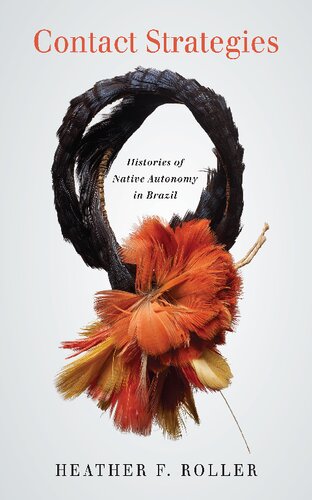

Most ebook files are in PDF format, so you can easily read them using various software such as Foxit Reader or directly on the Google Chrome browser.
Some ebook files are released by publishers in other formats such as .awz, .mobi, .epub, .fb2, etc. You may need to install specific software to read these formats on mobile/PC, such as Calibre.
Please read the tutorial at this link. https://ebooknice.com/page/post?id=faq
We offer FREE conversion to the popular formats you request; however, this may take some time. Therefore, right after payment, please email us, and we will try to provide the service as quickly as possible.
For some exceptional file formats or broken links (if any), please refrain from opening any disputes. Instead, email us first, and we will try to assist within a maximum of 6 hours.
EbookNice Team

Status:
Available0.0
0 reviewsAround the year 1800, independent Native groups still effectively controlled about half the territory of the Americas. How did they maintain their political autonomy and territorial sovereignty, hundreds of years after the arrival of Europeans? In a study that spans the eighteenth to twentieth centuries and ranges across the vast interior of South America, Heather F. Roller examines this history of power and persistence from the vantage point of autonomous Native peoples in Brazil. The central argument of the book is that Indigenous groups took the initiative in their contacts with Brazilian society. Rather than fleeing or evading contact, Native peoples actively sought to appropriate what was useful and potent from outsiders, incorporating new knowledge, products, and even people, on their own terms and for their own purposes.
At the same time, autonomous Native groups aimed to control contact with dangerous outsiders, so as to protect their communities from threats that came in the form of sicknesses, vices, forced labor, and land invasions. Their tactical decisions shaped and limited colonizing enterprises in Brazil, while revealing Native peoples' capacity for cultural persistence through transformation. These contact strategies are preserved in the collective memories of Indigenous groups today, informing struggles for survival and self-determination in the present.